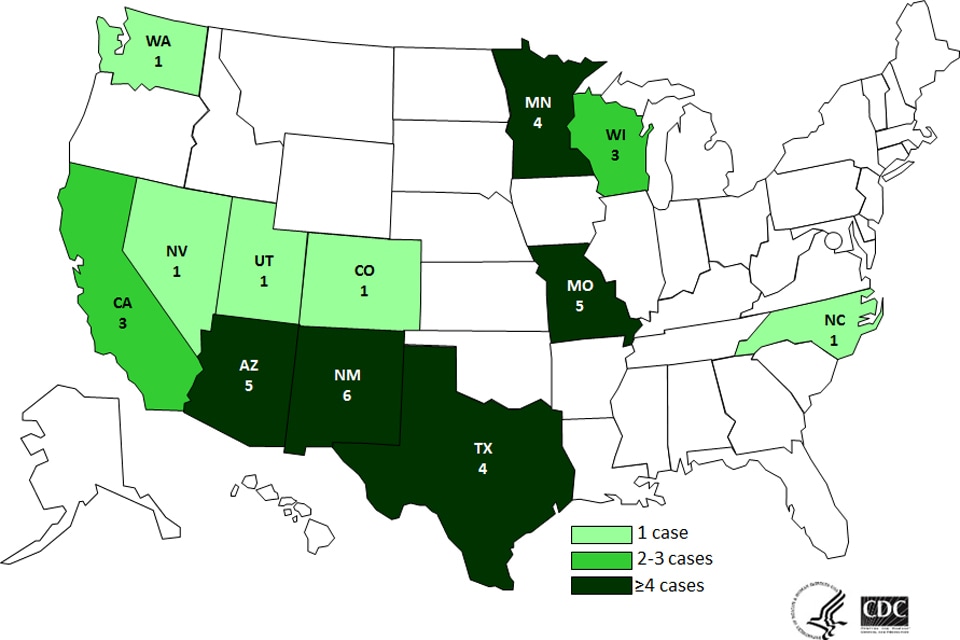It’s that time of the year when children (and children at heart) go out in their best costumes, knocking on neighbors’ doors with baskets full of candy in hand. It’s that time of the year when candy shops are full of consumers wanting to get their hands on sweet treats. A well-known treat for the fall and Halloween season is the candy apple: whole apples (usually Granny Smith apples) in sticks smothered with chewy caramel and colorful toppings. Never did it occur in any of our minds that such treats would be a source of illness: until now.
In January 6, 2015, Bidart Bros., an apple producer from Bakersfield, California, recalled Granny Smith and Gala apples they produced from their facility. The firm did so after an inspection and testing of their facility showed contamination of Listeria monocytogenes. Three clients of Bidart Bros. who are caramel apple manufacturers (Happy Apples, California Snack Foods, & Merb’s Candies) also announced the recall of their products due to L. monocytogenes contamination. The Centers for Disease Control and Prevention worked with the U.S. Food and Drug Association in the investigation of the outbreak. Listeria was isolated from infected individuals, and analysis was conducted through pulsed field gel electrophoresis (PFGE) and whole genome sequencing. These laboratory methods confirmed the presence of the pathogenic L. monocytogenes in the infected individuals.
Source: CDC
The Listeria contamination caused a multistate outbreak, reaching 12 states across the United States. A total of 35 cases has been reported, with 34 cases causing hospitalization. Based on the report of the Centers for Disease Control and Prevention, 11 illnesses were pregnancy-related, while 3 cases involved meningitis in children (aged 5-15 years old) who consumed the contaminated caramel apples. A total of 7 deaths were reported, with Listeriosis contributing to 3 of those deaths.
So how did L. monocytogenes survive and grow in caramel apples, a food in which the pathogen is not expected to grow? At the outset of the Listeria outbreak, many assumed that the cause of growth was the caramel coating on the apples, or the coating process itself. Although testing of the Bidart Bros. apple packing facility revealed the presence of L. monocytogenes on surfaces that directly contacted the apples, further investigation by experts was conducted to understand the mechanisms through which Listeria was able to grow on the caramel apples.
Dr. Kathleen Glass, Associate Director of the Food Research Institute in the University of Wisconsin, conducted a study to replicate the process and conditions undergone by the caramel apples during production.Dr. Glass hypothesized that inserting sticks into the apples released juice on the otherwise dry surface of the fruit, and subsequent coating with caramel trapped the pathogenic bacteria inside the finished product. This, in turn, created a favorable environment for L. monocytogenes to grow in the caramel apples. In the experiment, apple samples were inoculated with L. monocytogenes before dipping in caramel. One group contained sticks inserted into the apples while the other group did not have sticks inserted. Experimental results revealed that both groups of stick-punctured caramel apples (refrigerated and non-refrigerated) showed significantly greater L. monocytogenes growth than non-punctured caramel apples. This study indicates that extra precautions need to be taken in processing of such foods, since the interface between different components of the product may provide favorable conditions for growth of pathogenic bacteria. Even though foods are considered to be unfavorable for pathogen survival and growth, food safety measures still need to be taken to prevent future outbreaks.
Listeria monocytogenes has an infectious dose of 105 to 107 CFU in high risk individuals (eg. children, pregnant women, older populations, and immuno-compromised individuals). The pathogen is known to have adaptations to survive in the environment. L. monocytogenes is able to grow at refrigeration temperatures, and has the ability to form biofilms, thereby enhancing the pathogen’s survival in the environment. Listeriosis is the bacterial infection caused by the pathogen L. monocytogenes. Symptoms of the disease include diarrhea, fever, muscle aches, confusion, and loss of balance. Severe “invasive” cases of listeriosis may result in bacteremia, septicemia, and meningitis in high risk individuals.
How do you think this incident affects the apple industry in Canada? Should we now be extra careful in eating caramel apples? Comment below and share your thoughts!
Click on the “Cinnamon Caramel Apple Pumpkin” photo (from Darla of Bakingdom.com) to grab the recipe and have a great Halloween!
Interested in knowing how caramel apples are commercially made? Watch the video below:
Sources:
Andrews, J. (2015). IAFP 2015: Experts May Have Determined How Caramel Apples Caused That Listeria Outbreak.
IAFP 2015: Experts May Have Determined How Caramel Apples Caused That Listeria Outbreak
Centers for Disease Control and Prevention. (2015). Multistate Outbreak of Listeriosis Linked to Commercially Produced, Prepackaged Caramel Apples Made from Bidart Bros. Apples.
http://www.cdc.gov/listeria/outbreaks/caramel-apples-12-14/
Glass, K.A., Golden, M.C., Wanless, B.J., Bedale, W., & Czuprynski, C. (2015). mBio: Growth of Listeria monocytogenes Within a Caramel-Coated Apple Microenvironment. American Society for Microbiology.
http://www.ncbi.nlm.nih.gov/pmc/articles/PMC4620460/pdf/mBio.01232-15.pdf
Ryser, E.T. & Marth, E.H. (eds.). (2007). Listeria, Listeriosis, and Food Safety (3rd Edition). Boca Raton, Florida: Taylor & Francis. pp 85-110.


